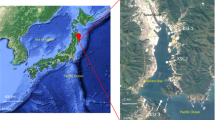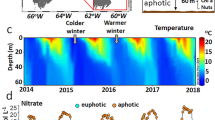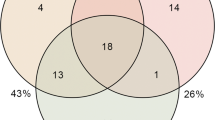Abstract
Marine bacterial diversity is vast, but seasonal variation in diversity is poorly understood. Here we present the longest bacterial diversity time series consisting of monthly (72) samples from the western English Channel over a 6 year period (2003-2008) using 747,494 16SrDNA-V6 amplicon-pyrosequences. Although there were characteristic cycles for each phylum, the overall community cycle was remarkably stable year after year. The majority of taxa were not abundant, although on occasion these rare bacteria could dominate the assemblage. Bacterial diversity peaked at the winter solstice and showed remarkable synchronicity with day-length, which had the best explanatory power compared to a combination of other variables (including temperature and nutrient concentrations). Day-length has not previously been recognised as a major force in structuring microbial communities.
Similar content being viewed by others
Article PDF
Author information
Authors and Affiliations
Corresponding author
Rights and permissions
About this article
Cite this article
Gilbert, J., Somerfield, P., Temperton, B. et al. Day-length is central to maintaining consistent seasonal diversity in marine bacterioplankton . Nat Prec (2010). https://doi.org/10.1038/npre.2010.4406.1
Received:
Accepted:
Published:
DOI: https://doi.org/10.1038/npre.2010.4406.1
Keywords
This article is cited by
-
The ocean sampling day consortium
GigaScience (2015)



